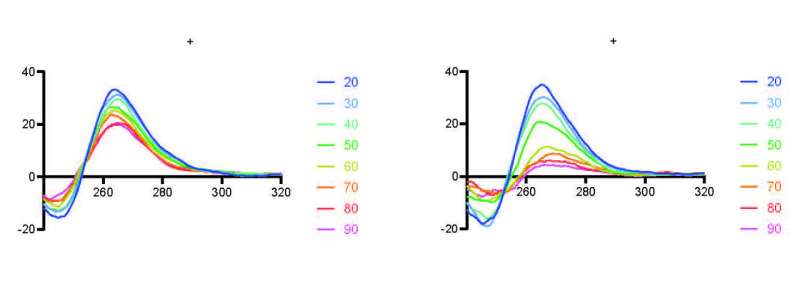This article has been reviewed according to Science X's editorial process and policies. Editors have highlighted the following attributes while ensuring the content's credibility:
fact-checked
peer-reviewed publication
trusted source
proofread
New tools reveal how genes work and cells organize

Researchers from Aarhus University and the Italian Institute of Technology have discovered how certain proteins can attach to special structures in RNA, called G-quadruplexes. Additionally, they have developed computational tools capable of predicting these protein-RNA interactions. The newfound ability to predict these interactions can help future work in understanding molecular pathways in the cell and pave the way for developing drugs targeting these RNA G-quadruplex binding proteins, that are found to be involved in disease such as cancer.
Proteins binding to RNA are important in many processes in the cell and can mediate a range of biological functions. A specialized structure in both DNA and RNA, the G-quadruplex, consists of regulatory elements involved in gene expression in both DNA and RNA.
In a new study, the researchers used theoretical predictions and molecular biology experiments to show that many chromatin-binding proteins bind to RNA G-quadruplexes. With this information, they can classify proteins based on their potential to bind RNA G-quadruplexes.
The study used a combination of experimental identification of RNA G-quadruplex-binding proteins and computational methods to build a prediction tool that identifies the probability that a protein binds to RNA G-quadruplexes. The findings showed that predicted proteins show a high degree of protein disorder and hydrophilicity, suggesting an involvement in both transcription and phase separation into membrane-less organelles.
Ulf Ørom's group has previously shown that RNA-DNA dual binding proteins are likely to have an involvement in the DNA damage response, linking DNA and RNA binding properties to a number of proteins. In the study, the researchers expanded the knowledge of RNA-binding proteins to identify RNA G-quadruplex binding proteins.
The researchers have also developed a computational tool to assess RNA G-quadruplex-binding potential of proteins.
With these new results, the researchers identify properties of protein-RNA interactions, and provide means to identify G-quadruplex binding properties that can potentially be targeted therapeutically in disease.
The findings have been published in Nature Communications.
More information: Johanna Luige et al, Predicting nuclear G-quadruplex RNA-binding proteins with roles in transcription and phase separation, Nature Communications (2024). DOI: 10.1038/s41467-024-46731-9
Computational tool: service.tartaglialab.com/updat … on/815419/dda3f5c513
Journal information: Nature Communications
Provided by Aarhus University





















